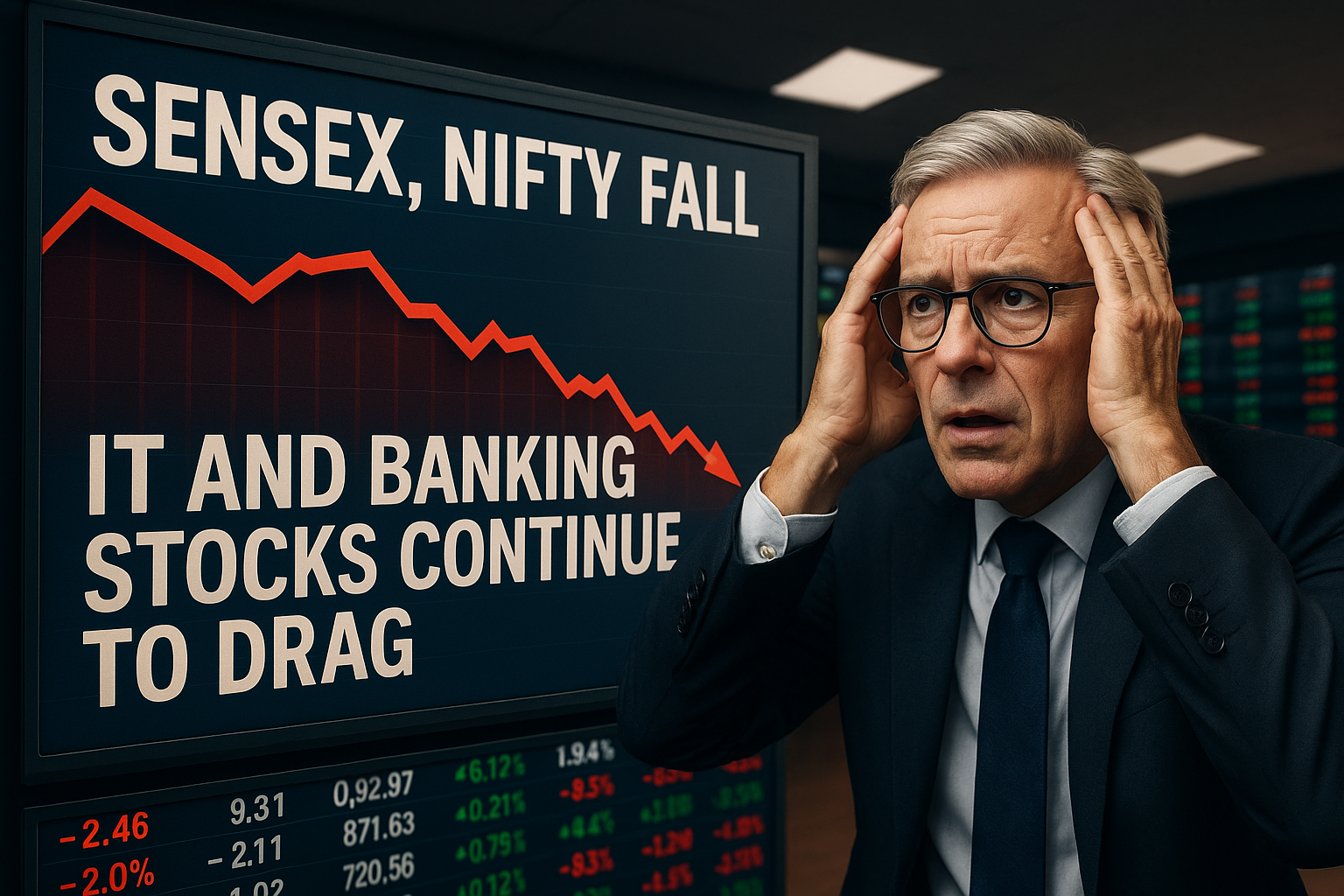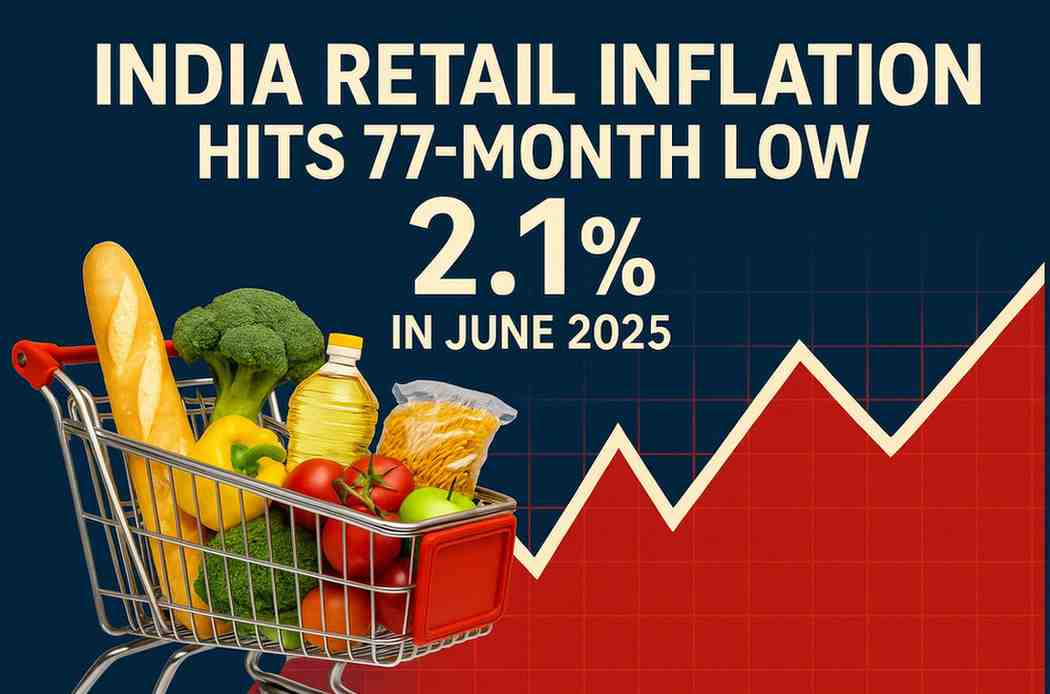-
Algos
-
Stocks
-
Trading
-
Strategies & Arbitrages
-
Mutual Funds

The Indian stock market took a hit on Thursday, with the benchmark indices, Sensex and Nifty, closing in the red. The selling pressure was driven by a combination of weak quarterly earnings reports, particularly in the heavyweight IT and banking sectors, and persistent outflows from foreign institutional investors (FIIs) who remain nervous about global trade deal concerns.
The BSE Sensex ended the day at 82,259.24, down 375.24 points, or 0.45 percent. The 30-share index opened with a slight gain but quickly fell into negative territory as selling intensified in major stocks like TCS, Infosys, and HDFC Bank.
The NSE Nifty 50 also finished lower, settling at 25,111.45, a decline of 100.60 points, or 0.40 percent.
Let's break down what drove the market's negative sentiment, which sectors were hit the hardest, and what the technical charts are telling us about the path ahead.
Thursday's market action was a story of caution. Investors found more reasons to sell than to buy, as several headwinds converged to create a risk-off environment. The subdued mood was a result of both domestic and global factors that are keeping market participants on the sidelines.
One of the biggest concerns weighing on the market is the weak start to the first-quarter earnings season. Investors were particularly disappointed by the performance of some of a few major companies, creating anxiety about the profitability of India Inc. for the rest of the year.
"Indian equity benchmarks ended marginally lower as investors exercised caution amid subdued Q1 earnings announcements, particularly in the technology and banking sectors," said Vinod Nair, Head of Research at Geojit Investments Ltd. When the biggest names in key sectors show signs of weakness, it creates a ripple effect of doubt across the entire market, making investors hesitant to buy even at lower levels.
Another key issue is the elevated valuations of many large-cap stocks. After a strong run-up in the market, many blue-chip companies are trading at premium prices. Without strong earnings growth to justify these high valuations, investors are finding it difficult to commit more capital. As Nair noted, "Market participants remained sidelined due to elevated valuations of large-cap stocks and FII outflows."
Foreign Institutional Investors (FIIs) have continued to pull money out of the Indian market. This selling pressure is largely driven by global factors, including uncertainty over a potential India-US trade deal. Any negative news on the trade front tends to make foreign investors more risk-averse, and emerging markets like India often see outflows during these periods.
While domestic institutional investors (DIIs) have been buying, the persistent selling from FIIs is a significant headwind that is keeping the market from making a sustainable move higher.
The selling pressure on Thursday was not uniform. The pain was concentrated in the heavyweight IT and banking sectors, while some defensive sectors managed to hold their ground.
The Nifty IT index was the worst-hit sector of the day, plunging 522 points. Heavyweights like Tech Mahindra, HCL Tech, Infosys, and TCS were among the top losers in the Sensex basket. This sell-off was a direct reaction to the weak earnings reports and concerns about a potential slowdown in global tech spending.
The financial space also faced significant pressure. The Nifty Bank index fell 230 points, while the Nifty Financial Services index was down 106 points. Major banking stocks like Axis Bank and HDFC Bank, along with Bajaj FinServ, were among the top losers.
In a sign that investors were moving towards safety, the Nifty FMCG index managed to surge. This is typical market behavior during periods of uncertainty. FMCG companies are considered "defensive" because their products, like food and other household goods, have steady demand regardless of the economic environment. This makes them a relatively safe place for investors to park their money when they are nervous about the broader market.
The negative sentiment was not just confined to the headline indices. The broader market also felt the pressure, with most indices closing in the red. * The Nifty Next 50 fell 159.10 points. * The Nifty Midcap 100 declined 100 points. * The Nifty Smallcap 100 ended the day 22.75 points lower. This indicates that the selling was widespread, affecting companies of all sizes, not just the large-cap giants.
The Indian rupee also traded weak on Thursday, falling 0.12 percent to close at 86.02 against the dollar. This weakness was partly due to the strength in the dollar index and the negative sentiment in the domestic stock market.
From a technical perspective, the market appears to be in a bearish phase. Rupak De, a technical analyst at LKP Securities, pointed out that the Nifty failed to move beyond the crucial resistance level of 25,260. "Nifty remained mostly under selling pressure throughout the day," he said. "On the hourly chart, a consolidation breakout is visible, indicating weakening bullish momentum.”
According to analysts, the current sentiment could drag the Nifty down towards the 24,920–24,900 zone in the short term. On the upside, 25,260 is likely to act as a strong resistance level.
With the market in a cautious mode, investors will be closely watching for any new triggers that could change the sentiment. The ongoing Q1 earnings season will remain a key focus, as will any developments on the global trade front. Any positive news could help to amplify market sentiment and lead to a recovery.
For the latest updates on stock market news and analysis, be sure to follow TheAIBull.com.

India's largest depository, NSDL, is set to launch its IPO. Learn what this means for investors, how it compares to CDSL, and the key details of the offer.

SEBI is concerned about high volumes in short-term F&O contracts. Learn why the regulator may increase contract tenures and what it means for retail traders.

Bitcoin has crossed $123,000, but this rally is different. Learn how record ETF inflows and major U.S. regulatory developments are driving the current bull run.

The Indian IPO market is heating up with seven companies, including NSDL and Hero Fincorp, expected to launch issues worth nearly Rs 10,000 crore by the end of July.

IDFC First Bank shares fall 6% in 5 days. UBS initiates neutral coverage, citing high credit costs and muted ROA as key challenges for the bank.

India's retail inflation hit 2.1% in June 2025, a 6-year low, driven by food prices. Learn what the latest CPI data means for future RBI rate cuts.
